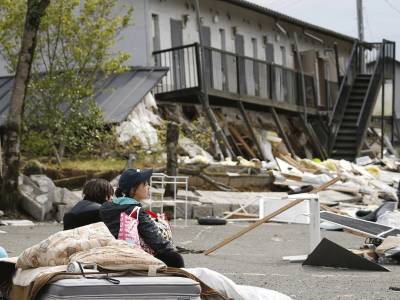The magnitude-7.7 earthquake that hit Myanmar on 28 March has killed at least 2,700 people, with the final death toll expected to be much higher. The quake appears to have been a rare type known as supershear — in which the energy of a rupture moves exceptionally fast through the ground, amplifying the destruction.
These labs have prepared for a big earthquake — will it be enough?
This kind of rupture is “the earthquake equivalent of a supersonic jet”, wrote Frederik Tilmann, a seismologist at the GFZ Helmholtz Centre for Geosciences in Potsdam, Germany, in an analysis on LinkedIn. The work is preliminary, but multiple research teams are converging on the supershear scenario.
If that explanation is correct, then the geological fault that broke during the quake — the massive Sagaing fault, which runs north–south through the heart of Myanmar — might have ruptured over 400 kilometres or more. In the coming days, researchers might be able to confirm this by looking at satellite imagery of the region taken before and after the quake.
In supershear earthquakes, the ground rupture travels faster than the seismic waves it produces. That effect can concentrate seismic energy ahead of the rupture, leading to greater damage at greater distances than would be expected from a non-supershear quake. Bangkok, for instance, saw at least one high-rise building that was under construction collapse during the quake, even though it is located around 1,000 kilometres from the epicentre.
Widespread damage
Damage is widespread across Myanmar and, to a lesser extent, in neighbouring Thailand. Search-and-rescue efforts in Myanmar are being hampered by the country’s ongoing civil war, which began after the military seized power in 2021. The coup also reduced the ability of scientists in Myanmar to monitor the country’s seismic activity — a capability that expanded in the 2010s, in part because of international collaborations1.
Now, there are fewer seismometers than before to feed information into Myanmar’s Department of Meteorology and Hydrology (DMH). Last year, for instance, the Earth Observatory of Singapore (EOS) removed two-thirds of its seismic monitoring network in Myanmar, “due to the coup, pandemic and consequent logistic difficulties”, says EOS seismologist Shengji Wei. The remaining ten stations were donated to the DMH, where researchers are now trying to see what data they can retrieve from them.
At least two seismic stations in Myanmar that had been upgraded in a collaboration with the US Geological Survey (USGS) did capture measurements during the quake, says Susan Hough, a USGS seismologist in Pasadena, California. Researchers are also using data from the national seismic network in Thailand to better understand what happened during the quake, and especially to monitor aftershocks.



